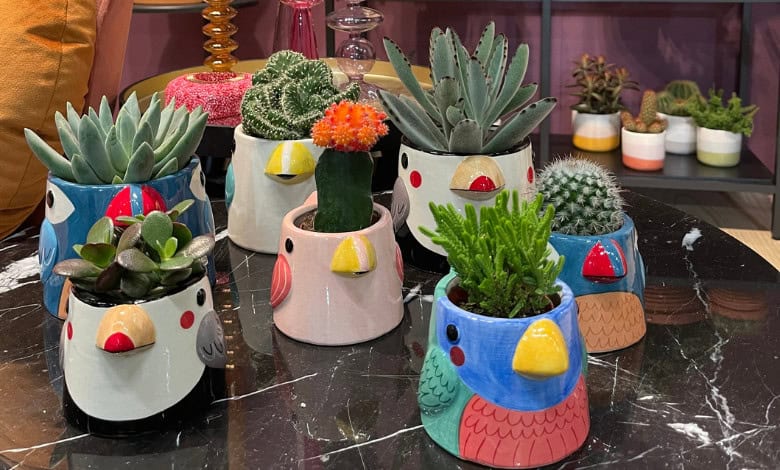Entertainment
Sunny succulents

Succulents are originally desert plants or from areas of low rainfall that survive by storing water in their fleshy leaves. A common name for them is ‘fat’ plants because of their fleshy leaves.
Their water wise design has resulted in many intriguing leaf shapes and textures, that fit right into contemporary home décor.
What’s more they are difficult to kill because they need less water and nutrients than traditional plants. Some of the hardiest succulents can survive without water for months. They are the ideal plant for the ‘lock up and go lifestyle’ or for absentminded plant parents.
Colourful Cactus
There is no denying the appeal of a single cactus or group of cactus with their intricate patterns of spines. But did you know that many cactus varieties flower in spring through to summer?
To get your cactus to flower, let it go dormant in winter. Stop watering it and keep it in a dry, cold (but not dark) place. Come spring, move it to a sunny spot and start watering it. Although each bud only blooms for one day, each plant produces many buds giving it a long flowering season.
Try This
One of the nicest ways to display cactus is in a cactus bowl. Because their roots are shallow, any shallow dish or container will work.
Cacti like good drainage but if the bowl doesn’t have drainage holes, put a layer or two of small rocks or gravel on the bottom. This will help drain water away from the roots and stop the roots from rotting.
Plant the succulents using your fingers and gently firm the soil around them. For very prickly characters, use a facecloth or towel to hold the cactus by the top when planting.
Cover the soil with a layer of coarse gravel or small river rocks. This helps keep moisture away from the base of the plants, which might cause them to rot. Water lightly and keep your dish garden near a sunny window.
Kalanchoe and Calandiva
Calandiva and Kalanchoe are succulents that flower throughout the year but especially in winter, with a large range of colours. They are indoor stalwarts with long lasting flowers and need very little care.
Kalanchoe produce clusters of single, star-shaped flowers in vivid colours. Once they have flowered indoors kalanchoe can be moved outdoors in summer, onto the patio or into the garden. They fit right into a succulent or water wise garden.
Calandiva is a cultivar of Kalanchoe but with double flowers that resemble a small rose when opened. The dense clusters of flowers are carried above the dark green succulent leaves, giving it the appearance of a posy.
Both kalanchoe and calandiva will reflower throughout the year if the old flowers are cut off. They thrive in a warm, bright room and don’t need much water. Let the soil become almost dry before watering deeply until the water comes out of the drainage holes but don’t let the plant stand in water. Feed with a liquid fertiliser once a month.
Rock Rose
Echeveria have elegant, fleshy rosettes in a range of colours. As indoor plants they like bright light or filtered sunlight. Place close to sunny windows or on patios. Let the soil dry out completely before watering. Do not wet the leaves. Turn the pot regularly to expose all sides of the plant to direct light. Echeveria multiply quickly and should be allowed to fill a container for a decorative effect.
Zebra Plants
Haworthia (Zebra plant) is a mini succulent with spiky dark green leaves, spotted with white dots that appear as stripes, hence its common name.
While they thrive in bright light they also tolerate lower indirect light. Indoor plants generally need watering every two to three weeks, when the soil is dry. As indoor décor plants, they look good planted individually in glass or porcelain containers. Drop the pots into the containers and take out to water.
For more information, visit LVG Plants.
Article and images supplied by Alice Coetzee.
For more on gardening, visit Get It Magazine.





















